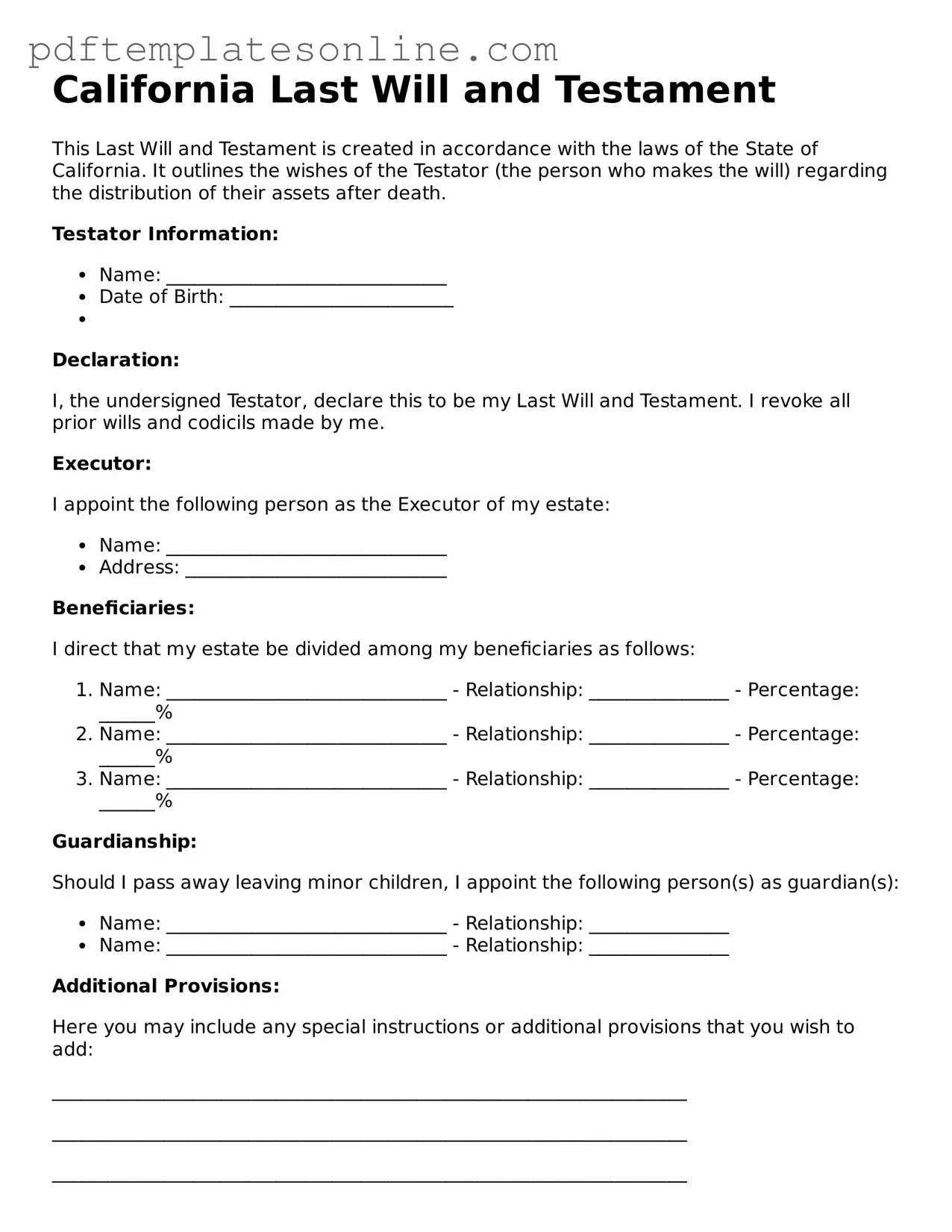Filling out a California Last Will and Testament form can be a straightforward process, but there are common mistakes that individuals often make. One frequent error is not being clear about the distribution of assets. It's important to specify who will receive what. Vague language can lead to confusion and potential disputes among beneficiaries.
Another mistake is failing to update the will after major life events. Changes such as marriage, divorce, or the birth of a child can significantly affect how assets should be distributed. If a will is not updated, it may not reflect the current wishes of the individual.
People sometimes overlook the requirement for witnesses. In California, a will must be signed by at least two witnesses who are present at the same time. If this step is skipped, the will may be deemed invalid. It’s essential to ensure that witnesses are not beneficiaries themselves to avoid conflicts of interest.
Some individuals forget to include a residuary clause. This clause explains what should happen to any assets not specifically mentioned in the will. Without it, there could be uncertainty about how leftover assets will be handled, leading to potential legal issues.
Another common mistake is not signing the will properly. A will must be signed at the end of the document. If it is not signed or if the signature is placed incorrectly, the will may not be considered valid. It’s crucial to follow the signing requirements carefully.
People may also neglect to provide clear instructions for the executor. The executor is responsible for carrying out the wishes outlined in the will. Without clear guidance, the executor may struggle to fulfill their duties, leading to delays and misunderstandings.
Lastly, many individuals fail to store the will in a safe but accessible location. If the will cannot be found after the individual passes away, it may not be honored. Keeping it in a secure place, while ensuring that trusted individuals know where to find it, is essential for ensuring that the will is executed as intended.
